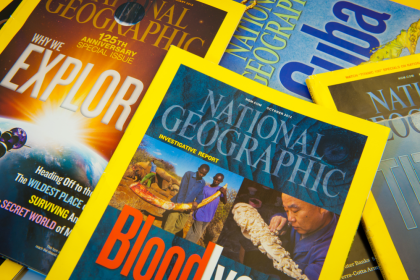The October 2013 issue of National Geographic magazine is picture perfect. It’s a “perfect” depiction of the changing face of America; for example, a Dominican-Korean. It’s also a fact and subject that makes WASPs (white, Anglo-Saxon, protestants), who lost their grip on American demographics and political power when President Obama was elected president, uncomfortable and unhappy… and many blacks.
In Nat Geo’s 125th Anniversary Collector’s Edition titled “The Photo Issue,” the “Changing Faces” article features simply that features (eyes, lips, noses) we are not used to seeing on a person of that complexion or hue and hair texture. It’s what we played off as simply “exotic” or “mixed.” Though it is prevalent, we’re still intrigued and in many cases baffled by our multiracial peers. Our curiosity sometimes provoke us to ask the daring questions: “Where are you from?” and even “What are you mixed with?”
Nat Geo notes that tracking races for the U.S. Census Bureau is an arduous task. As evident, since the year 2000 when citizens were allowed to select more than one category for race; it was roughly 6.8 million people who did so. On the 2010 survey, that number rose 32 percent. Since self identification is subjective, race is no longer defined genetically, biologically or anthropologically, but influenced by politics, religion, history, and geography, or even situational. The one-drop rule is no longer applicable.
Remember how black America felt rejected when Tiger Woods said he was “cablinasian?” It’s a made up term but a portmanteau of Caucasian, Black, American-Indian, and Asian which is the ethnic makeup of his late father Earl (who is 1/2 African American, 1/4 Chinese and 1/4 Native American) and mother Kultida (who is 1/2 Thai, 1/4 Chinese and 1/4 Dutch), making him – take out your measuring cups – 1/4 Chinese, 1/4 Thai, 1/4 Black, an 1/8 Native American and an 1/8 Dutch.
Portrait artist Martin Schoeller who captured these phenomenal images for Nat Geo says, “I like building catalogs of faces that invite people to compare them. I want to challenge the way we use appearance to shape identity.”
Please note the cover image is the work of Steve McCurry (circa 1985) of an Afghanistani refugee.

















